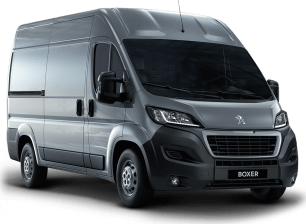First things first, just to put your mind at ease – the Quartermaster is not absolutely terrible to drive on road, in fact it’s actually quite nice: planted, comfortable (on coil-spring suspension), and refined (for a ute).
It’s no surprise that a long four-wheel-drive ute does really well on-road, even if it is a heavy solid axle vehicle and not particularly dynamic.
What's also not surprising – because on paper this is an off-road beast – is that the Quartermaster is very capable off-road.
It has three diff locks (front, centre and rear), off-road mode, hill descent control and more, so it's an effective mix of traditional mechanicals and driver-assist tech. That's the dual range transfer case, but it also has electronic traction control. The 3.0-litre turbo-diesel engine and the eight-speed automatic transmission work well in on-road situations and it's also a clever smooth combination in off-road scenarios.
So there's plenty to like about this ute when it comes to 4WDing.
Be aware though: this is a big, heavy vehicle with a long wheelbase, so it takes considered driving to steer around – it has a big turning circle at 14.5 metres – but that's not to say those dimensions and those characteristics ruin it off-road because they don't. The Quartermaster simply requires a bit more thought when you're driving it.
If you haven't spent a lot of time or any time in vehicles like this, such as the Toyota LandCruiser 70 series or of that sort of ilk – big long old-school four wheel drive utes – then you may have a bit of an issue with the steering. It is slow, and there is a lot of play to it, especially off-centre. It does feel floaty and it takes a lot of effort and constant micro-corrections when you're driving to keep it on track and to keep it going where you want to. Put it this way: it’s not self-centred so you have to work at getting it back on track once you’ve taken on a turn.
But I like that, because four-wheel driving should be an entirely immersive experience, you should be always directly involved in the process and in this ute you are.
There’s plenty of power and torque across a nice rev range, with plenty of torque down low, which is crucial when off-roading.
And while the stretched wheelbase makes the underbody vulnerable to knocks and scrapes, especially over more severe 4WD-only terrain, the Quartermaster actually manages quite well.
Its approach, ramp breakover and departure angles – 36.2, 26.2 and 22.6 – are reasonable for something of this size and with 264mm of ground clearance and 800mm of wading depth, this ute has the measurements to cope with most off-road challenges you could throw dirt at.
Another thing I like about the Quartermaster is the fact it retains an old stubby stick, that’s working off the dual-range transfer case, to put the vehicle into low range and that's a welcome touch and a practical nod to the past, rather than a button or a dial.
As mentioned earlier, it has live axles, so there’s flex through the front and rear, although it'd be even better with a swaybar disconnect system onboard (as in the Jeep Gladiator).
This Trialmaster gets the BFG KO2s and where the standard tyres on a contemporary ute may not be up to scratch in off-roading terms, the KO2s work really well. It’s impressive what a difference decent all-terrains make, and if you want to get into the sloppy stuff, then you might consider getting some mud-terrain tyres.
So the Quartermaster is a very capable four-wheel-drive ute and there's a lot to like about it, but the issue with a vehicle like this is that people may come into it not understanding exactly how it rides, how it drives and how involved you actually have to be and the fact that there are lots of compromises, indeed some sacrifices.
You're not getting as much driver-assist technology as you get in other utes, and it doesn't drive as precisely or perhaps as comfortably as some other utes – but that's missing the point.
The Quartermaster is about that all-encompassing off-roading experience. And if you get in one of these things, you have to be all-in, ready for the bumps and the discomfort and the effort it requires but all of those things add to the appeal of this ute, rather than detract from it.
And that's a major point of difference with this ute over others in the market: in being faithful to the spirit of old-school 4WDing, Ineos has been willing to forgo those things which people have come to expect and as a result it may only draw the faithful, the committed, who are all-in for off-road adventure.
Where the Quartermaster falls short, however, is in terms of practical use because its payload is 832kg in the diesel version and that’s disappointing, especially when a 2.8-litre LC70 GXL dual-cab can cope with 1325kg.
It is rated to tow 750kg unbraked, and 3500kg braked and with a kerb weight of 2718kg it has a GVM of 3550kg and a GCM of 7000kg.






